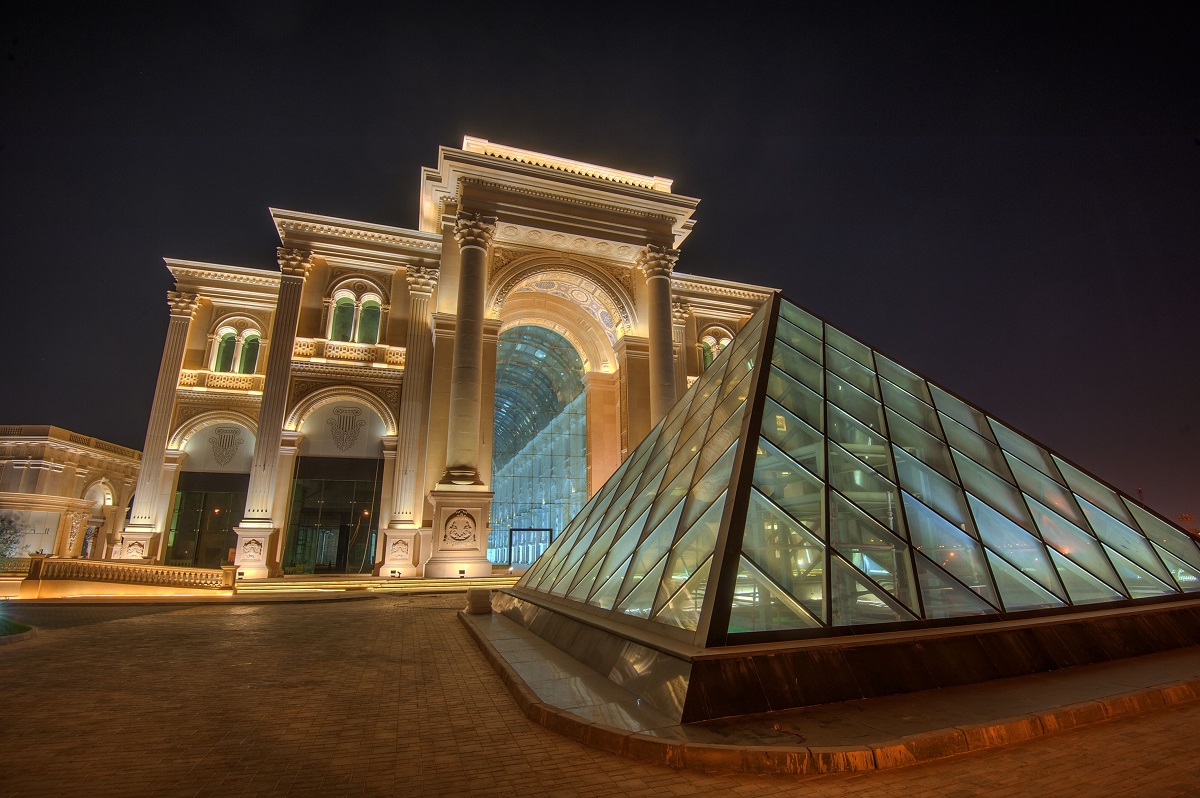The World’s Coolest, Most Cultured New Malls
Sixty years ago, the first fully enclosed, climate-controlled shopping center opened its doors in Edina, Minn., causing a retail revolution that reverberated across the country — ultimately leading its architect, Victor Gruen, to return to his native Austria, appalled by the soulless monster he helped create. Then, just as quickly, online shopping brought on its demise. But abroad, the dying icon of American consumerism is now being reborn in the way Gruen originally intended — as a hub for community and cultural experiences, not just commerce.
Aishti by the Sea, Beirut, Lebanon

It was on the heels of the Lebanese Civil War that Tony Salamé launched Aishti, introducing luxury brands like Prada and Dior to his beleaguered Beirut. Now, 26 years and as many department stores later, he is also bringing in big-name contemporary art. Last October, he opened Aishti by the Sea, a roughly 430,000-square-foot mall housing a large museum space on the waterfront. With the New York gallerist Jeffrey Deitch as an adviser, the location’s first two exhibitions have featured works from Salamé’s 2,000-strong personal collection. (American conceptual artists from Allen Ruppersberg to Rashid Johnson are on display until April 23, 2017.) And the site, designed by the British-Ghanaian architect David Adjaye, is something of an artwork itself: Situated under a mashrabiya-style, red-steel “skin” inspired by the terra-cotta roofs of circa-1920 Beirut, its two conjoined entities “communicate through passages and windows, just like cuts in a Fontana painting,” Salamé says. Merging commerce and culture as such may be as controversial as it is cutting-edge, but, he explains, “The art is not there to push sales; it adds value to a mundane shopping experience.” Likewise, he just unveiled a Harrods Urban Retreat spa, an open-air pool bar and an outpost of Beirut’s beloved Music Hall on the roof. And with forthcoming pop-ups from lesser-known Lebanese designers, the shopping should get more interesting, too.
Alhazm, Doha, Qatar

Malls may be dying across the U.S., but in the grandiose desert capital of tiny, petro-rich Qatar, they are sprouting up left and right. Consider the 5.4-million-square-foot Mall of Qatar, which will boast the country’s first Cheesecake Factory, or the open-air and yet air-conditioned Katara Plaza, to house a designated Children’s Mall shaped like a giant gift box.

Dreamed up by the Qatari real estate mogul Mohamed Abdel Karim Al Emadi, the soon-to-open Alhazm is taking a more rarefied approach. “Mr. Al Emadi is passionate about classical architecture,” says Georges Bou Ibrahim, the mall’s creative director. Thus, he hired 15 architects to create a modern Middle Eastern version of Milan’s 19th-century Galleria Vittorio Emanuele II — with a domed-glass roof, Tuscan marble walls and arches featuring hand-carved Arabian motifs — surrounded by temperature-controlled gardens with fountains, gazebos and 200-year-old olive trees imported from Spain. Inside, a range of retailers and restaurants from the Continent will make their Doha debuts alongside Italian and Qatari kitchens, a women’s spa-slash-social-club and a library with rare editions of Arabic and English classics. Bou Ibrahim says, “Alhazm is not only about shopping; we are a creating a new lifestyle destination” — presumably for the sort of locals who regularly go on shopping sprees in Europe. A glass pyramid serves as a V.I.P. entryway, offering access to an underground auction house, personal shoppers and butler service.
Bikini Berlin, Germany

You won’t find a single chain store within this midcentury complex turned “concept shopping mall” alongside the city zoo in West Berlin. Instead, after a three-year renovation, the central concrete-and-steel Bikinihaus — a former fashion-factory-cum-postwar-icon, which earned its nickname for its two-part structure and exposed midsection — has become a springboard for emerging talent and, according to its creative director Nicole Srock-Stanley, “a platform for constant reinvention.” To wit: A row of 66-square-foot timber boxes house a rotating mix of new designers from near and far, with pop-ups and one-of-a-kind concept boutiques (like a collaboration between Berlin’s renowned curator-turned-retailer Andreas Murkudis and the cult-favorite Italian clothier Aspesi), and ever-changing, specially commissioned artworks and events.

Last December, a “Contemporary Christmas Market” with street-food cabins and an ice-curling rink was installed on the roof terrace; an upside-down garden with 30,000 live flowers was suspended in the atrium during the spring; and the circa-1957 Zoo Palast cinema, birthplace of the Berlinale, has been restored for V.I.P. premieres. “Our customers might have somewhere else where they buy all their life essentials,” says Srock-Stanley, “but they come to Bikini Berlin to get inspired, be entertained, have a two-hour vacation.” Or you could spend the night in its 25hours Hotel, whose jungle-themed rooms overlook the zoo’s monkey enclosure.
The Commons, Bangkok, Thailand

With Thailand’s quickly growing middle class, the capital is hardly lacking for hiso (“high society”) shopping centers. But between all of the shiny malls and condominiums going up in areas like Thonglor — the residential neighborhood turned night-life destination where the restaurateurs Varatt and Vicharee Vichit-Vadakan were raised and now run the buzzy cafes Roast and Roots — it is starving for more wholesome spots. So in February, the siblings opened the Commons, a mall that celebrates local artisans — and serves as an indoor-outdoor gathering ground for Thonglor. As Vicharee says, “We hope to build a community first; the mall, in a way, is a byproduct.” Food takes center stage within the minimalist, multilevel building — its main Market floor houses a Thai grocery and deli, an egg-centric eatery, an all-natural juice bar and more — though there’s also a beloved florist who crafts bouquet-style rings, and an audio shop with gadgets geared toward condo living. “To be sustainable in the long run, we need to be relevant to the needs of the community in which we reside,” says Vicharee. Hence the various green spaces, from the Top Yard, with its herb garden and culinary workshops on the roof, to the Common Ground, which hosts morning yoga and live music at night. “We want to encourage people to spend a bit more time outside of an air-conditioned room — to become Thonglor’s backyard.”





























